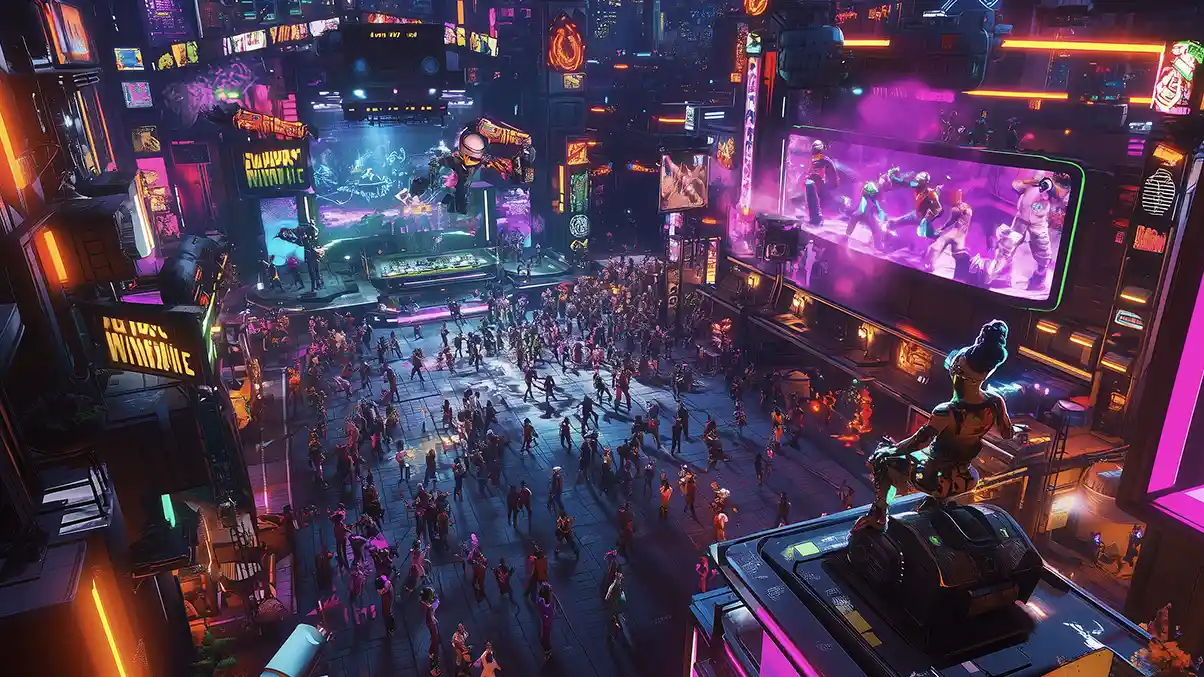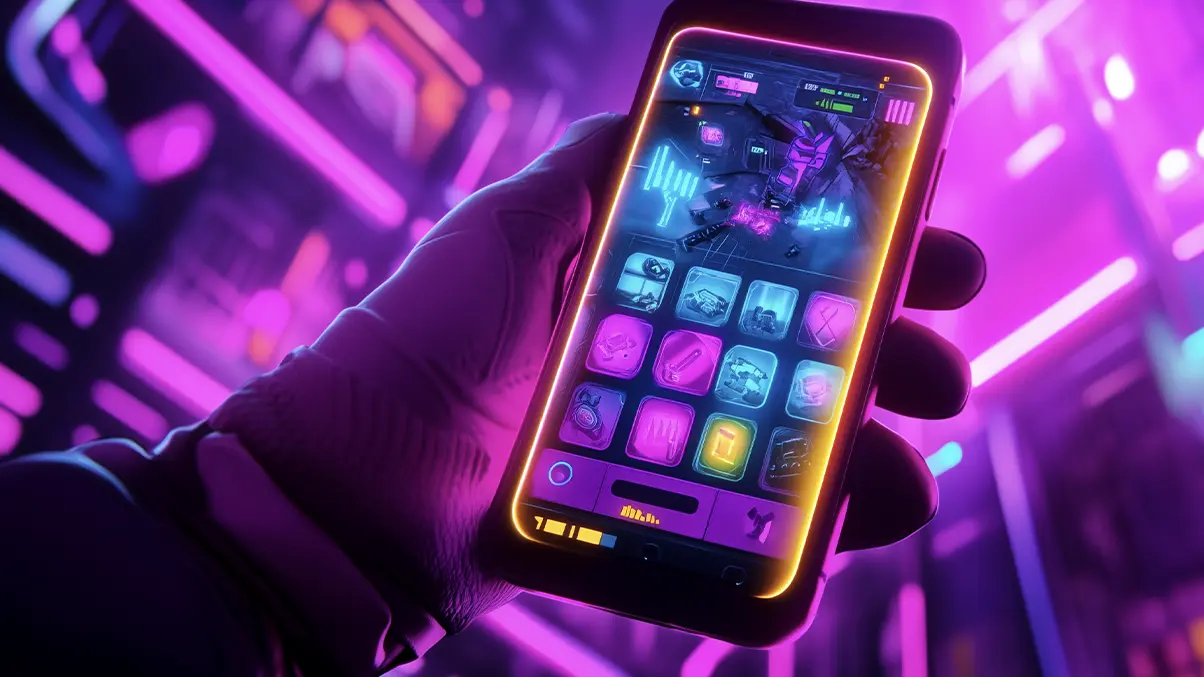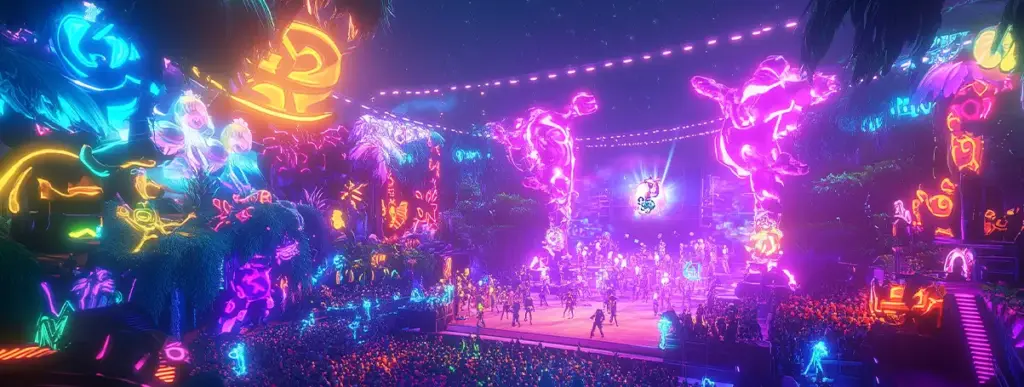Overview

Live events, from concerts and conventions to product launches and conferences, are evolving rapidly in an age defined by digital technology and decreasing attention spans. To stay relevant and captivating, event organizers are constantly seeking new ways to make their experiences more immersive and participatory.
One of the most impactful tools in this pursuit is event gamification: the practice of applying game mechanics to non-game contexts to boost engagement. In live events, this can mean anything from meeting gamification to virtual event gamification, and from integrating interactive features into event apps to weaving game-like challenges directly into the event’s structure. For organizers aiming to increase attendance, deepen engagement, and create memorable experiences, gamification presents a promising frontier.
This article will explain the basics of gamification and its application to live events, and offer some arguments in favor of gamifying your next event, some proven physical and virtual event gamification ideas, as well as advice on measuring success metrics in event gamification.
What is gamification?

At its core, gamification involves incorporating elements commonly found in games, such as points, levels, achievements, progress bars, quests, and challenges, into non-game settings. These mechanics are powerful because they create a sense of progression and reward, triggering positive reinforcement and keeping users engaged.
However, gamification isn’t just about individual gratification – it’s also about fostering community. Play is a fundamentally social behavior that brings people together under shared goals and rules. Gamified experiences often lead to collaboration, competition, and organic socialization, all key factors in a successful event environment.
Gamification is already a proven strategy across a wide range of industries, from education and health to corporate training and even urban planning, like bike-sharing systems in New York City. Its power lies in its ability to guide behavior and build engagement through structured fun — qualities that translate seamlessly to the world of live events.
Applying gamification to live and virtual events
Gamification can be used in multiple contexts in the live event space – such as in conference gamification. Gamification in events means leveraging game-like systems to drive engagement before, during, or afterwards. Whether it’s encouraging early ticket purchases with rewards, improving attendee movement across venues, or creating interactive experiences via mobile apps, event gamification offers creative and practical benefits.
For example, implementing gamification in events through theme-based mechanics can inspire a sense of adventure, competition, and accomplishment, turning a standard event into an experience that attendees actively participate in rather than passively observe.
Gamification for virtual events can be even easier to implement, with digital platforms providing built-in flexibility for virtual event gamification interactivity, tracking, and user flow management.
Why you should gamify your next event

Boost participation – introducing game mechanics like points, levels, or badges can significantly increase attendee participation. People are naturally motivated by goals and rewards, whether it’s collecting digital achievements, unlocking access to exclusive content, or competing for prizes.
Enhance sponsor and vendor ROI – when attendees are nudged toward sponsor booths or brand activations through challenges or incentives, it increases visibility and interaction. This translates into better outcomes for exhibitors, making them more likely to invest in future collaborations.
Improve crowd flow and navigation – event gamification is an effective tool for guiding attendees around an event space. Whether you’re encouraging exploration of different zones or managing peak congestion points, strategically placing interactive challenges can optimize traffic and enhance the overall experience. Virtual event gamification operates on similar logic, as gamified experience can balance the load across virtual rooms and minimize technical bottlenecks.
Strengthen networking opportunities – gamified networking activities can break the ice and drive meaningful interactions. Structured games that prompt introductions, shared tasks, or team-based activities can make networking feel more natural and less intimidating.
Deliver information in engaging ways – gamified formats such as quizzes or interactive storytelling can improve knowledge retention. Whether you’re sharing brand messaging, onboarding new users, or educating an audience, event gamification helps ensure the information sticks.
Create lasting positive impressions – the best gamification examples across industries are those that take care to make the underlying experience fun. When attendees enjoy themselves, they’re more likely to remember the event, share their experience, and return in the future. A memorable and enjoyable event is one that builds lasting brand loyalty and word-of-mouth.
Winning event gamification Ideas
Here are some gamification ideas for virtual events and physical conferences that you may want to implement in your next event:
- Points and experience gain: assigning points for completing actions, such as visiting booths, attending sessions, or checking in, can create a compelling loop of participation. Attendees may “level up” as they engage, unlocking new tiers of rewards or content.
- Challenges and achievements: Incorporate quests or milestone achievements to tap into attendees’ desire for completion and recognition. Adding leaderboards can increase friendly competition and public accountability, making the experience more exciting.
- Scavenger hunts and easter eggs: These encourage exploration and engagement. By placing clues, hidden messages, or QR codes around the venue or digital platform, you can drive traffic to under-visited areas and keep people curious and on the move.
- Rewards: Offering real-world incentives, be it merchandise, discounts, or VIP access, can dramatically increase participation. Even digital rewards like badges or exclusive content can be surprisingly motivating when tied to recognition and progress.
- Quizzes and trivia games: these are excellent for knowledge delivery. Whether built into an app or hosted live onstage, trivia games turn passive listening into active learning and competition.
- Alternate Reality Games (ARGs): these immersive experiences blend narrative, puzzles, and multi-platform interaction to pull participants into a story. An ARG running in parallel with your event can create an overarching narrative that enhances immersion and engagement.
Measuring the success of event gamification

Because event gamification is often experience-driven, it’s important to anchor its success with clear metrics. Here are several key performance indicators to consider:
- Active users and attendance: track how many attendees engage with gamified experiences, whether through app check-ins, completed challenges, or participation in interactive events. A rise in active participation is often a direct result of effective event gamification.
- App or platform engagement time: another benefit of using apps and web-hosted technologies is the ability to track the average time spent interacting with an app or a website. This can be a potential signifier of an engaging virtual event gamification experience. However, it’s important to keep in mind that long interaction times with the app or website do not directly translate to engagement and may actually signify that the interaction with the app is unnecessarily frictional and unintuitive. Event holders using app-and web-based solutions should extensively playtest them to ensure that they are frictionless and engaging.
- Attendee feedback and surveys: the most straightforward way to determine whether your event gamification was successful is through direct feedback from attendees. In exit surveys, be sure to ask your audience whether they enjoyed the gamified elements. Did they feel engaged? Were they motivated to participate more than they normally would? Attendees will often be candid about what worked and what didn’t.
- Social media activity: look for increased shares, hashtags, mentions, and user-generated content related to your event gamification efforts. A successful game element often becomes a shareable moment, helping your event gain visibility beyond its immediate audience.
- Networking metrics: if your event includes networking components, measure how many connections were made, whether through app-based introductions or physical meeting gamification activities.
- Return on Investment (ROI): ultimately, event gamification should support your bottom line. Whether through increased ticket sales, more satisfied sponsors, or higher retention for future events. Comparing these numbers before and after implementing event gamification can provide a clear picture of impact.
Conclusion
Event gamification is more than a trend – it’s a versatile strategy that taps into human psychology to drive engagement, connection, and fun. When thoughtfully designed and tested, gamification in events can transform any live or virtual concert, conference or meetup into a dynamic and memorable experience. Whether you’re aiming to educate, entertain, or simply stand out, implementing your event gamification ideas and making your event more playful is an investment that can yield powerful returns.
What is the value of virtual performances?
Premium elements enhance virtual live performances and create additional revenue streams. The engagement possibilities of VIP experiences often exceed what’s feasible at physical venues, where time constraints limit personal interactions. Virtual meet-and-greets, digital merchandise, downloadable concert recordings, or exclusive content access can form attractive VIP packages. Some artists offer interactive backstage tours or pre-show workshops with band members as premium options in addition to standard tickets. Finally, artists can dedicate entire sections of the performance to exclusive sessions for premium ticket holders, creating additional incentives for superfans to upgrade.
FAQ
What are some gamification activity examples?
Examples of event gamification activities include points-based systems, scavenger hunts, leaderboards, or interactive quizzes built into a mobile event app.
What types of gamification are there?
The types of gamification include structural gamification (applying game mechanics to a process) and content gamification (making the content itself game-like, such as using storytelling, characters, or challenges).
What are the main principles of gamification?
The core principles of gamification include motivation through rewards, feedback systems, progressive challenges, and a sense of achievement or status.
Can gamified activities be streamed?
Yes, many gamified experiences can be integrated into virtual events and livestreams. Interactive quizzes, polls, and real-time challenges can be synchronized with broadcast content to engage remote audiences.



